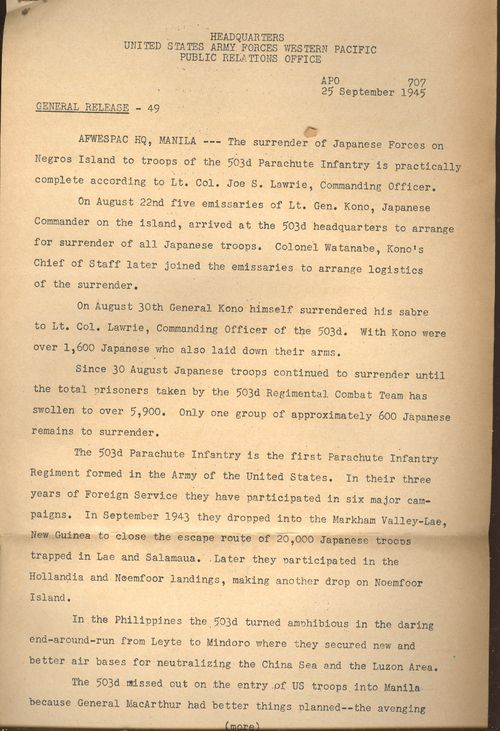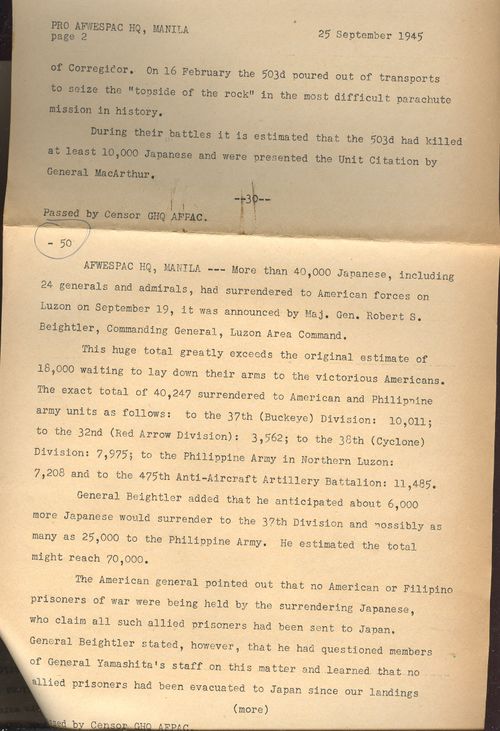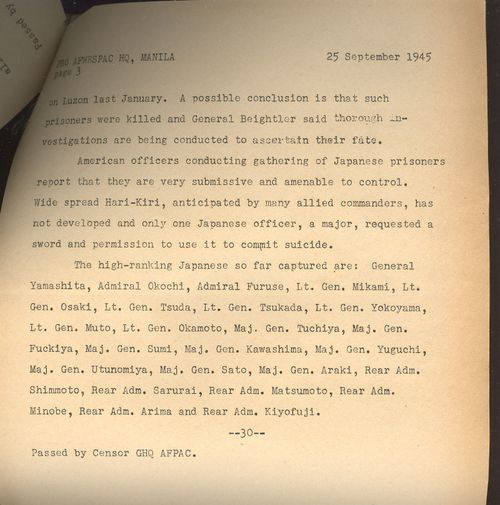Announcement of the Final Surrenders of Japanese Troops including Gen Yamashita
Headquarters, United States Army Forces Western Pacific (AFWESPAC HQ), Manila
General Release, APO 707, 25 September 1945. 13” x8”, 2 lvs, 3pp, approximately 500 words. Offset printed. Document produced by the Public Relations Office. Tinted on newsprint, stapled. Good copy of a rare document. $750
This document contains two reports of what were among the very last surrenders of sizable numbers of Japanese troops.
General Release 45 (in two parts)
[First] Surrender of Japanese forces on Negros Island to troops of the 503d Parachute Infantry...
and
[Second] Surrender of 40,000-70,000 Japanese forces (under command of General Yamashita)...
[First] :Surrender of Lt. Gen. Kono, first meeting on 22 August to arrange with the 503d for final surrender. Surrender continued to 30 Aug to include Kono himself to Lt. Col Joe S. Lawrie, 1,600 troops accompanied Kono. From 30 August to the posting date in September more than 5,900 Japanese troops surrendered. As of that date, “only one group of approximately 6090 Japanese remains to surrender”.
Following the surrender details were two paragraphs of a short history of the 503 Parachute Regimental Combat team, or PRCT) operations during the war, winding up to the 16 Feb 1945 deployment to Corregidor,(campaign from 16-26 February) in an attempt to recapture the Bantaan Peninsula, where they inflicted 10,000 Japanese fatalities. (The totals on this campaign varying from about 6,600 Japanese soldiers killed to 10,00; it seems as though the U.S. Suffered 207 killed.)
[Second]
Surrender of more than 40,000 Japanese troops to American forces on Luzon on 19 September to Maj. Gen. Robert S. Beightler (Commanding General, Luzon Area Command). The commander of the Japanese troops was the infamous General Yamashita. The total number of surrenders included about 70,000 troops, including dozens of generals and admirals. Yamashita faced war crime charges and was executed for his terrible crimes over the years.
It was determined that the Japanese forces had no U.S. Or Allied prisoners—interrogations provided that the claim the POWs were earlier sent to Japan was shown to be false, and that the prisoners had probably been murdered.
Another issue was protecting the surrendered Japanese from Philippine civilians, who in the past sought revenge on their oppressors.







Comments